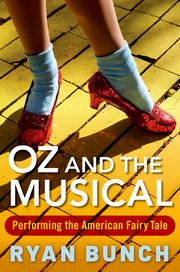
Call For Papers!
Conference title: Children’s Music in the Nineteenth Century
Location: Lovere (BG), Accademia di Belle Arti Tadini
Dates: 28-30 November 2025
Organizer: Centro Studi Opera Omnia Luigi Boccherini
Deadline for proposals: Sunday 13 April 2025
All proposals should be submitted by email to <conferences@luigiboccherini.org>
Official languages of the conference: English, French, Italian.
WEBSITE: https://www.luigiboccherini.org/2024/09/08/childrens-music-in-the-nineteenth-century/
Keynote Speaker: Roe-Min Kok (McGill University)
Music composed specifically for children can have a playful, entertaining, or pedagogical intent. In the nineteenth century, especially, it was used to provide children with a cultural moment, increase their skills, as well as to teach good manners. The development of children’s music is closely connected with the concept of domestic music and gender ideology. As Roe-Min Kok (2010) argues, «by the mid-nineteenth century, ‘home’ was largely a female space that reflected the moral, emotional, and affective outlook of the mother. Mothers presided over home-centred rituals» and child-rearing. For this reason, many of the titles of children’s music depict this predominantly female, domestic and private realm. Technological developments associated with the Industrial Revolution expanded the production of domestic and educational music. In 1995, Isabel Eicker listed about 750 albums of piano music for children by more than 400 composers of the 19th century, many of them little known today (Kinderstücke: … in der Klavierliteratur des 19. Jahrhunderts). Until the 1930s, children’s music published for didactic purposes had titles that referred to classical genres, such as rondos, variations, sonatinas (by Clementi, Diabelli, Dussek, Heller, Kuhlau), dances, arrangements of opera melodies, etudes, and progressive exercises (such as those by Carl Czerny or Johann Baptist Cramer’s Op. 100). After the 1840s, miniatures came into vogue, pieces that reflected the influence of Schumann’s Kinderszenen Op. 15 and Album für die Jugend Op. 68: e.g., Heinrich Grosse’s Bilder für die Jugend Op. 1 (Leipzig 1849), Carl Haslinger’s Jugend-Album Op. 53, (Vienna 1849), or Carl Gottlieb Reissiger’s Bilder aus der Jugendzeit Op. 192 (Dresden 1850). Women also published albums: Cécile Chaminade’s Children’s Album Op. 123 and Op. 126, or Amy Beach’s Children’s Carnival Op. 25 and Children’s Album Op. 36. Vocal music for children (opera melodies, nursery rhymes and folk songs), choral repertoire for educational use in primary schools, and operas and operettas were also composed throughout the nineteenth century. Catalogues kept by Novello, for instance, included more than 50 operettas that were entertaining and morally safe (Hugo Cole, ‘Children’s Opera,’ Grove Music Online).
A selection of the conference papers will be published.
Contact: Dr. Massimiliano Sala, conferences@luigiboccherini.org
Upcoming AMS Business Meeting!
Friday, November 15, 7:30-9:30 PM.
“Spotlight on New and Emerging Work from Early-Career Scholars “
Chair(s): Ryan Bunch (Temple University), Susan Boynton (Columbia University)
Presenter(s): Demetrius Shahmehri (Columbia University), Ala Krivov (University of Western Ontario), Trevor R. Nelson (Wichita State University), Hannah Neuhauser (University of Texas at Austin), Carrie A. Danielson (Florida State University)
Organized by the AMS Childhood and Youth Study Group
This session will showcase the work of graduate students and early-career scholars in the field of music and childhood. The format will be non-traditional, combining reports on current research with presentations on public musicology and pedagogy relating to music for, by, about, and with children and youth. Projects presented in this session range from established methods of historical research to projects situated in schools and classrooms (including those in higher education), digital spaces for research and exhibition, and venues beyond the academy as sites of teaching, play, and collaborative learning. To illuminate both the musical construction of childhood and young people’s participation in musical meaning-making, our presenters enter into conversation with sources that include the conventional archive and musical text, material culture and ephemera, records of children’s reception of music, children’s books and literature, children’s film and media, and video games. Dissertations, postdoctoral research, first book projects, student teaching, and scholarship oriented toward public and community objectives are the wellsprings of this exciting new work in the burgeoning field of music and critical childhood studies. Through peer-mentoring and modeling, presenters will benefit from sharing work with each other, as well as with attendees in the ensuing discussion.
We are exited to see you there and enjoy a riveting discussion in the growth of our field!
Children’s Literature Research Guide at Harry Ransom
During her time at the Harry Ransom Center at the University of Texas at Austin, our intern Hannah Neuhauser created this new research guide dedicated the the authors, illustrators, and composers that have delved into literary works for children. Collections including, but not limited to Lewis Carroll, Kate Greenaway, A. A. Milne, Julia Alvarez, Issac Bashevis Singer, Arthur Rackham, and Harvey Schmidt.
New Releases!
From the first stage production of The Wizard of Oz in 1902, to the classic MGM film (1939), to the musicals The Wiz (1975) and Wicked (2003), L. Frank Baum’s children’s novel The Wonderful Wizard of Oz (1900) has served as the basis for some of the most popular musicals on stage and screen. In this book, musical theater scholar Ryan Bunch draws on his personal experience as an Oz fan to explore how a story that has been hailed as “the American fairy tale” serves as a guide for thinking about the art form of the American musical and how both reveal American identity to be a utopian performance.
Ryan Bunch studies musical theater as well as children’s music, media, literature, and performance cultures. He studied historical musicology at the University of Maryland and is completing a Ph.D. in childhood studies at Rutgers University-Camden. He is an active member of the International Wizard of Oz Club.

